Vaporising Api-Bioxal

Forget it …
I remortgaged the house, took my kids out of university and cancelled both trips to Mauritius later this year, all so I could afford some Api-Bioxal (a snip at £10.99 for 35g from Thorne’s). Api-Bioxal is the VMD-approved oxalic acid-containing miticide. Only ‘containing’ as – according to the manufacturers instructions – only 88.9% of the dodgy-looking white crystalline powder is actually oxalic acid (OA). The remaining ~11% is a mixture of glucose and powdered silica (VMD documentation — moved so many times without a redirect that you'll have to search for it yourself. Sorry, and thanks a lot VMD). As cutting agents go, these are relatively harmless. Nevertheless, some have expressed concern that the presence of glucose might leave a horrible gunky mess (a widely accepted technical term) in the bottom of the vaporiser. Let’s see …
Since I’d promised to help a friend with vaporising a few hives that were disappointingly Varroa-riddled when treated earlier in the winter, this seemed a good opportunity to do a side-by-side comparison of Api-Bioxal and OA vaporisation – in terms of residues, not efficacy¹. My vaporiser is an ‘active’ model (made by Sublimox) in which the vaporised oxalic acid is forced out through a small nozzle in about 20-30 seconds (see video). In use, the OA crystals are dropped into a preheated pan – by inverting the Sublimox – so the temperature change from ambient to 157ºC happens more or less instantaneously. Any comments below therefore might not apply to the passive vaporisers like the “Varrox”, or the plethora of home-grown ones² on the forums or variants listed on eBay. In the majority of these types the powder is added to a pan which is then heated to the sublimation temperature³.
At the start of the trial the pan of the Sublimox was clean, contained no residues and was only slightly tarnished (from historical use). This machine has been used dozens of times previously and in each case has been washed out with clean water after use as instructed by the manufacturers.
After a single colony was treated with 1.6g of Api-Bioxal the pan of the Sublimox contained an obvious charred residue.
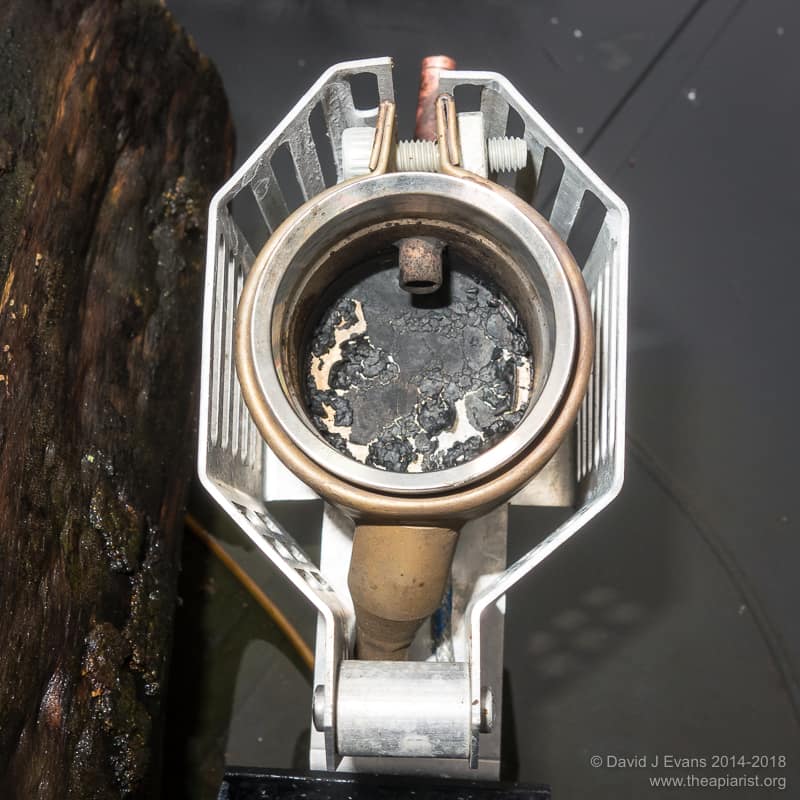
Single use …
We treated one further hive with Api-Bioxal and took another photograph of the vaporiser ‘pan’ which now contained an even more obvious charred caramelised deposit, bubbled and lumpy in places. This wasn’t a loose flaky deposit, it was burnt onto the base and lower sidewalls of the vaporiser ‘pan’.
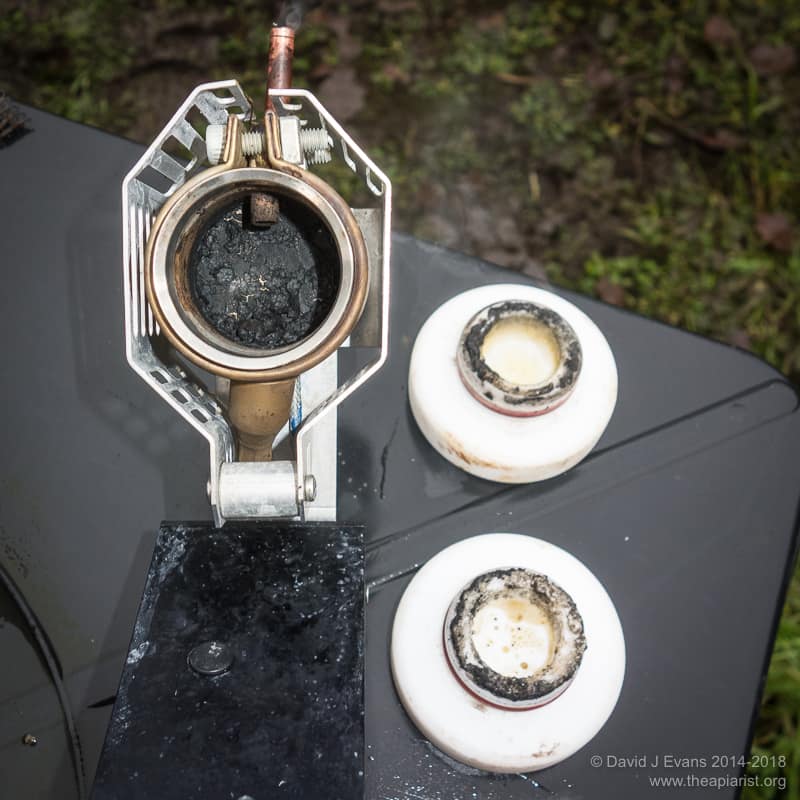
Two treatments …
In use the ‘collar’ around the plastic (delrin?) cups used to deliver the OA/Api-Bioxal usually have slight traces of the powder left around them. These were particularly obvious when using Api-Bioxal though I’m not sure any greater amount of powder was left here … it just looked a lot worse. It was also more difficult to clean off than ‘pure’ OA.
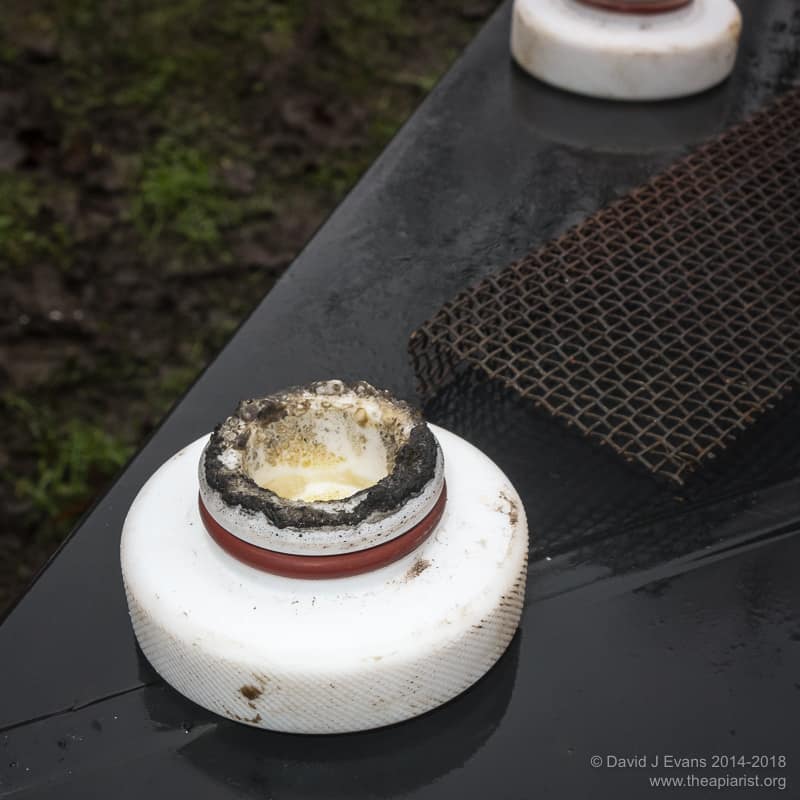
Plastic cup …
The caramelised charred residues remaining in the vaporiser after two Api-Bioxal treatments needed a combination of scraping with a knife and repeated rinsing with boiling water to remove it. This took several minutes and would clearly be impractical (and irritating) to do between treatments, meaning that the residues would build up quickly over time. Compare the first and second image in the series above to see how much residue builds up at each use (and see the note below regarding the amount vaporised).
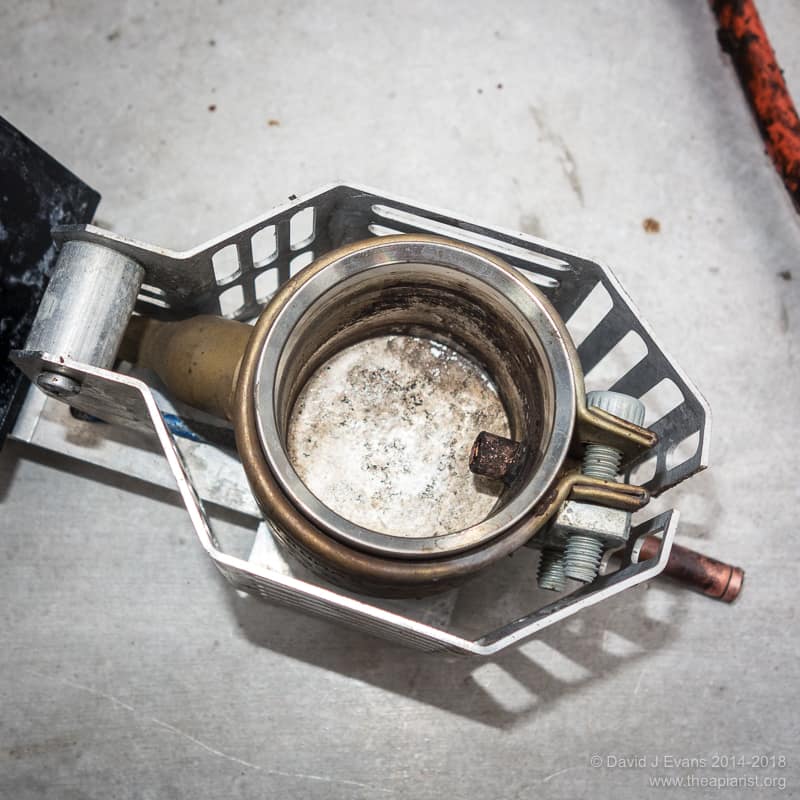
Cleaned vaporiser …
I then added 1.6g of standard oxalic acid dihydrate (Thorne’s) and vaporised it before immediately photographing the unwashed pan and cup. The photo below should therefore be compared directly with the first in this series. You can see the traces of OA powder at the end of the nozzle of the vaporiser, but the pan is completely clean and contains no additional charred and caramelised residues. This vaporisation was done ‘in the open’ (i.e. not into a hive) and it was interesting to see how long it took the extensive cloud of crystals – perhaps 5 x 2 x 2m in extent – to dissipate as it gently drifted away downwind.
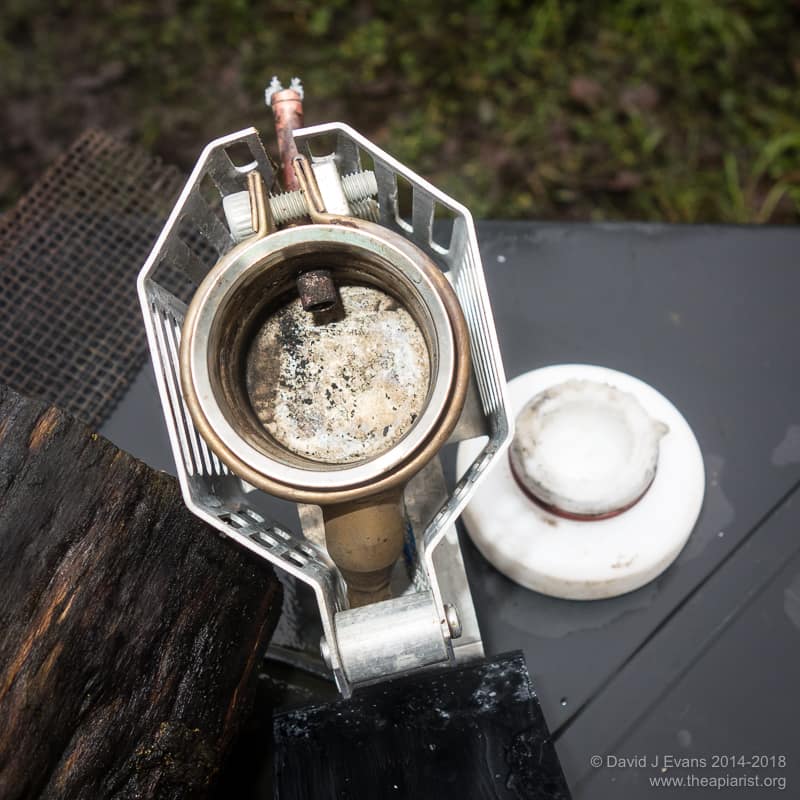
Single OA use …
But it gets worse …
I actually used much less Api-Bioxal per hive than the manufacturers recommended 2.3g per colony (this is partly because there is published evidence that ~1.4g is sufficient and double that amount provides no increase in mite killing). I didn’t weigh the Api-Bioxal but used one measuring scoop that – from previous tests – is known to contain ~1.6g of OA when full. Had I used the full recommended dose of Api-Bioxal I would have therefore expected the residue build up to be about 50% worse than shown above. On a vaguely brighter note, the powdered Api-Bioxal pours easily and smoothly, presumably because of the anti-caking agents it contains.
What are the implications of this?
I am very disappointed with the amount of residues left in the vaporiser after using even a single (less than recommended) dose of Api-Bioxal. I’m also disappointed with how difficult these are to clean out of the vaporiser. Might these residues damage the vaporiser, for example by blocking the nozzle, or reduce the effectiveness of vaporisation, for example by not allowing the pan to heat as evenly or quickly? I think both of these are a distinct possibility. An advantage of vaporisation is the ease and speed with which OA can be administered. If the vaporiser needs to be cleaned between every (or even every few) hives it would significantly reduce the attractiveness of this type of Varroa treatment. Remember, if you take your PPE seriously – which you should when vaporising oxalic acid – you’ll be wearing gloves, a respirator/mask and goggles throughout this entire procedure, including cleaning out the residues from the hot vaporiser.
No thanks.
Update … 22/2/16
Chris Strudwick kindly sent me before and after photographs of a Bioenoxal vaporiser that had been used once with Api-Bioxal. The ‘before’ image (left) shows the machine after vaporising 1.6g of Api-Bioxal. The ‘after’ shows the “result of 5 minutes with a nylon pan scourer and water after an initial scraping with a hive tool” … so the gunk can be cleaned off, but it takes time.
- Before …
- After …
Many thanks Chris
¹This would have entailed treating hives with a known Varroa-load with either Api-Bioxal or OA. This was not done.
²Some of the DIY vaporisers are either spectacularly dangerous or have been designed without an appreciation of the temperature control required to vaporise oxalic acid.
³If you have a “Varrox”-type vaporiser I’d be interested to hear your experience with using Api-Bioxal.
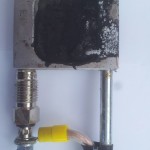
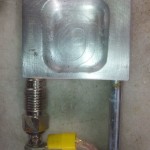
Join the discussion ...